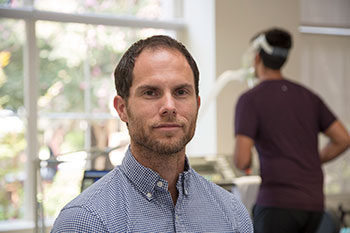Thinking about getting fit fast? Think again
High-intensity workouts can be beneficial, but preparation is necessary
High-intensity fitness programs are designed to burn fat and build muscle fast by stressing muscles more than other workouts. These workouts, however, have recently been in the news for their links to injuries, including rhabdomyolysis (or rhabdo), a serious condition that occurs when exercise goes beyond muscle stress to potentially permanent muscle damage.

Judd Van Sickle manages the sports performance program for UC Davis Health where he guides everyone — from those just getting started on an exercise program to professional athletes — on ways to improve their fitness. Here, he answers questions about high-intensity exercise, along with safe and effective alternatives.
Can high-intensity exercise really be dangerous?
The short answer is yes, but the biggest danger to health is a sedentary lifestyle, which is much more significant and widespread than overdoing exercise. The goal should be to gradually and progressively overload the body to achieve higher levels of performance, rather than abruptly increase activity levels. While high-intensity exercise can lead to overuse injuries like rhabdo or muscle and joint injuries, these are much less likely to occur with proper preparation.
Are there any particular fitness trends that concern you?
Any of the all-out, push-yourself-to-the-max, group workouts that overemphasize intensity (more sets! more reps! push harder!) at the expense of proper form and preparation can be problematic. Our UC Davis sports medicine physicians treat a lot of injuries related to these types of programs. Intensity can be great when performed correctly, but too much, too soon is likely to cause problems.
Programs to get you to the next fitness level:
-
Return to Fitness helps safely bridge the gap between where you are and where you would like to be with fitness.
-
Evaluations provide complete assessments of current fitness levels.
-
Movement Optimization enhances sports performance, reduces injury risks and improves overall physical function.
- Performance Tests, including VO2max, ventilatory threshold, lactate profile and metabolic efficiency, offer details on your physiological fitness together with a training consultation to improve fitness performance.
What are the issues with a sedentary person or casual fitness buff doing intense fitness activities?
The biggest issue is that moving regularly isn’t something most people do, making those who try to get shape quickly more prone to injury. Inexperienced exercisers or those who haven’t regularly exercised in a while have a tendency, especially in group settings, to push themselves too much because they aren’t aware of how hard they can and should push themselves.
Can high-intensity exercise in some circumstances improve fitness?
There are ways to dose intensity and speed fitness, but that should not be the emphasis for most people. Start by moving more throughout the day, which is more beneficial than being sedentary or working out vigorously just once or a few times a week. At the same time, people who have been doing the same exercises with little or no change in intensity for months or even years are not likely to get more fit unless they change their routines, push themselves harder and work out beyond their comfort zones.
What are the signs that you have gone too far with a workout?
Pain is a great sign that a workout is causing trouble. If any exercise causes pain, don’t push through it. Through a progressive approach to physical activity, you can learn the difference between pain and exertional fatigue or being uncomfortable.
What advice do you give someone who has been sedentary, or mostly sedentary, but wants to be fit?
Virtually everyone can be very physically fit and able to do the things he/she wants during workouts without going too far. However, you need to think long term. Properly preparing the body for movement by working on mobility, stability, strength and cardiovascular fitness allows you to eventually do whatever type of physical activity you choose to do. Before diving in to strenuous exercise, spend six to 12 months (or more!) cleaning up your diet, working on mobility and addressing movement dysfunctions, while steadily increasing strength and developing a cardiovascular base. Putting in the time on the front end will better prepare your body for fitness, while greatly reducing injuries.
